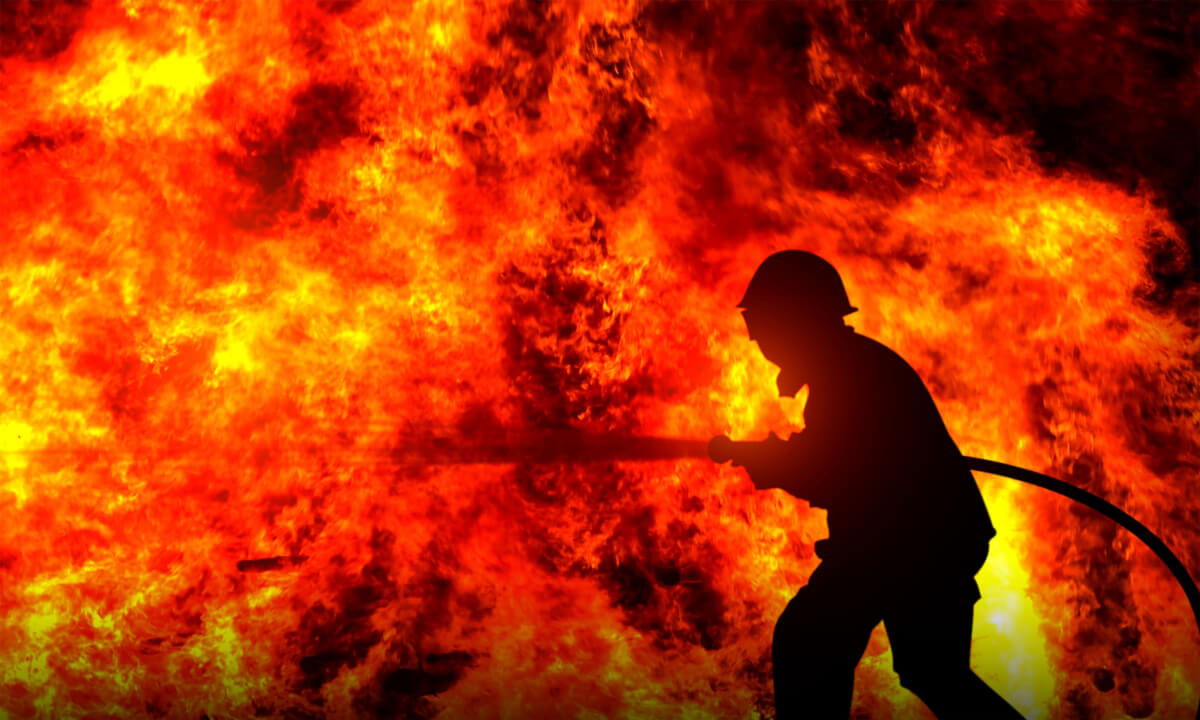While some wildfires can be spotted from miles away and provide you ample time to get away from danger, some can happen quickly, and you may find yourself trapped. A lightning strike, rockfall, extremely dry and high temperatures or man-made incidents like a discarded cigarette can suddenly put acres of land ablaze.
If you find yourself in such a situation, here are some tips that can help you survive.
- Stay calm
Despite the infernal blaze, try to keep your cool. Panicking will impair your judgement and make you hyperventilate. This is bad, because aside from possibly trapping yourself by panicking, breathing in a huge amount of smoke and superhot air will scorch your lungs, impairing your ability to move fast and think clearly.

- Retreat
Quickly assess the situation and look for a way out. If the fire is down the mountain or hill, get down from there. Fire will quickly make its way upwards faster than your two legs can climb. Even if the fire is a couple of miles away, don’t stay for the view and hightail it as soon as you can and alert the authorities. Fast moving winds can fan flames and scatter the fire in different directions that can trap the unsuspecting gawker.

- If you can’t increase the distance, look for a body of water
A pond, river or lake may offer a safe refuge against a wildfire if you’re caught in the middle of it. While there have been instances when hiding in a pool has saved lives, this should only be done as one of your last options. While the water may keep most of your body away from the fire, your head and face may still be exposed to radiant heat. Keep in mind too that while the fire can’t touch the surface of the water, it can cause it to get hot or even boil, resulting in scalding or severe burns.

- If there is no body of water, find a wide sunken area
A wide area free from things that could serve as fuel from the fire, like dry vegetation and heavy logs, could offer some protection. A meadow or a rocky field are suitable for this, as well as swampy areas. Keep low and breathe the cool air close to the ground. If you have synthetic materials on you like nylon or polyester, take them off—they can melt when temperatures rise and cause further injuries. Once safely in place, hunker down and cover your nose and your mouth with a piece of cloth to keep smoke and debris from entering your lungs.

- Alert the authorities if you can
If you have your mobile phone with you and you still have reception, contact the authorities as soon as you can and provide as much details about your location as possible. It’s essential to note any landmarks that can help rescuers zero in, if they’re unable to locate your position by tracking your phone.
- Be seen
If you have a bright piece of clothing, spread or let it float beside you to make spotting you easier. It will be easier for people nearby or in the air who may be on the lookout for others on the ground to spot you and extend help.

- Dig in
If you have no other way out, dig a trench if you can and get into the hole, covering yourself in dirt and wait for the fire to pass over you. Be aware that this is extremely risky, as fire can consume the oxygen around you and suffocate you.
As soon as the fire passes, seek help immediately. Be careful when travelling through an area ravaged by wildfire, as trees and structures are more prone to collapse and hot embers could still cause injury.
Still, the best way to not get stuck in a situation where you’re trapped in the middle of a wildfire is to do your part and minimize the dangers yourself. Be careful when starting your fire and when handling flammable materials. Do not leave a fire unattended. When done, put out your fire properly by dousing it with water and making sure there are no live embers left that could be swept away by the wind, by covering it with dirt. As soon as you see an unattended fire, put it out immediately if you can or call the park supervisors or authorities.


